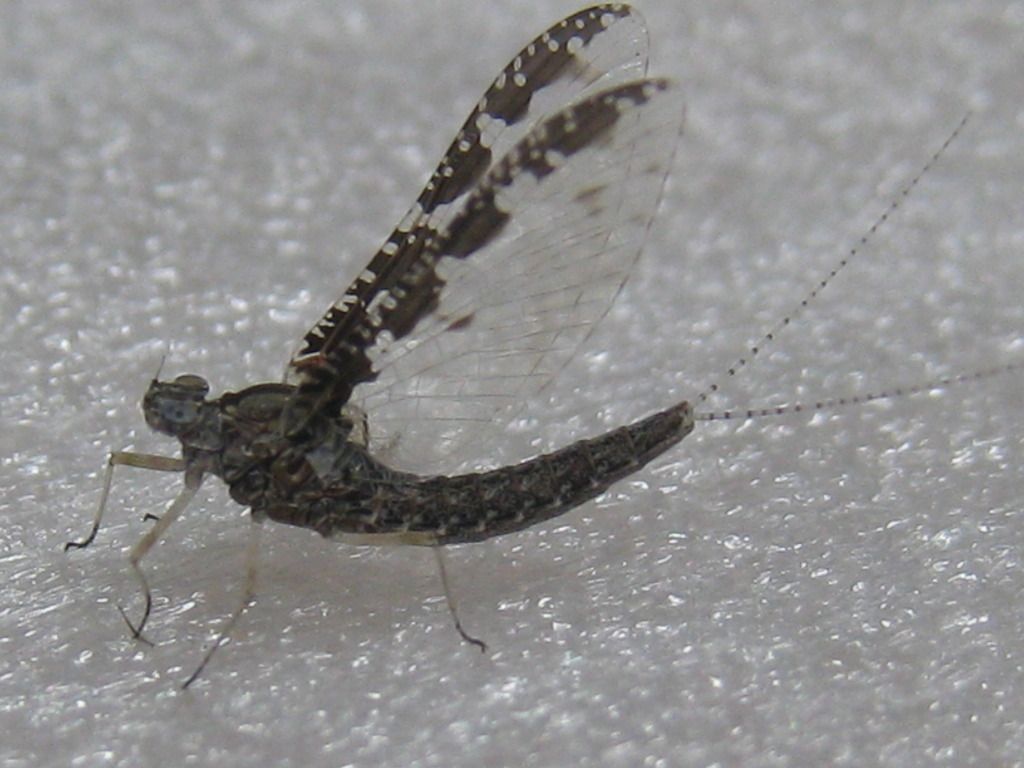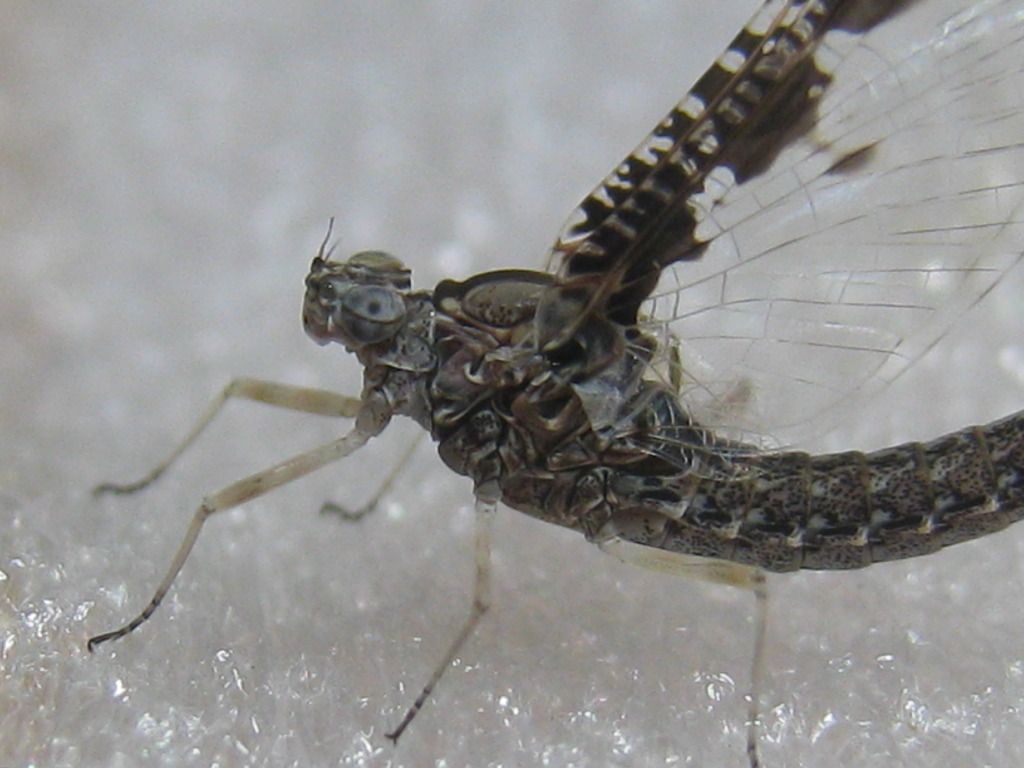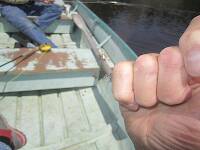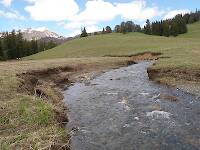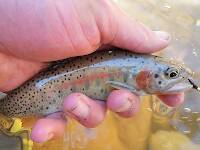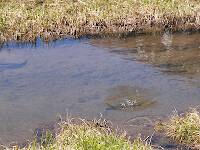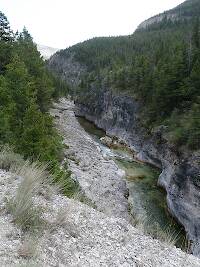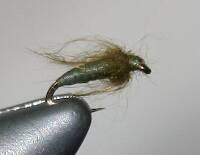
Hex Mayflies
Hexagenia limbata
The famous nocturnal Hex hatch of the Midwest (and a few other lucky locations) stirs to the surface mythically large brown trout that only touch streamers for the rest of the year.
Featured on the forum

This species was fairly abundant in a February sample of the upper Yakima.

Troutnut is a project started in 2003 by salmonid ecologist Jason "Troutnut" Neuswanger to help anglers and
fly tyers unabashedly embrace the entomological side of the sport. Learn more about Troutnut or
support the project for an enhanced experience here.
Shawnny3 on Aug 11, 2012August 11th, 2012, 9:15 pm EDT
What a beauty!
-Shawn
-Shawn
Jewelry-Quality Artistic Salmon Flies, by Shawn Davis
www.davisflydesigns.com
www.davisflydesigns.com
Sayfu
Posts: 560
Posts: 560
Sayfu on Aug 12, 2012August 12th, 2012, 6:15 am EDT
Here's an aspect of my aquatic insect focus...I am embarrassed to say that many times I can not describe the color. And I am not color blind. To have it described as a brown/ olive, or just an olive, amber, and other colors, I have to say, "OK, I'll go with that," but sure couldn't be the one making the judgment most of the time.
PaulRoberts on Aug 12, 2012August 12th, 2012, 9:25 am EDT
You are not alone in that. Color is a tricky thing. Lighting (sheer amount and reflected) alters things tremendously. Some of the bug descriptions we read about may have been done with even and particular lighting through a lens.
Practically speaking, in my tying, I believe that color is less important than other things -except maybe to my aesthetic sense.
Practically speaking, in my tying, I believe that color is less important than other things -except maybe to my aesthetic sense.
Sayfu
Posts: 560
Posts: 560
Sayfu on Aug 12, 2012August 12th, 2012, 9:28 am EDT
Paul,
And I agree about the aspect of color as not being tremendously important, yet I give it high regard in my tying.
And I agree about the aspect of color as not being tremendously important, yet I give it high regard in my tying.
Crepuscular on Aug 12, 2012August 12th, 2012, 3:47 pm EDT
Lighting (sheer amount and reflected) alters things tremendously.
I guess this is why some colors may be more important than others.
PaulRoberts on Aug 12, 2012August 12th, 2012, 4:25 pm EDT
Eric, Would you be willing to expand on that?
Crepuscular on Aug 12, 2012August 12th, 2012, 4:54 pm EDT
Well, trying not to be too verbose, the way light reacts when coming into contact with different colors is different. A simple example would be lighter colors reflecting light while darker colors absorb light. The physics behind the way light reacts to different colors and materials gets pretty complex pretty quick and is WAY beyond my basic knowledge of the physics of light. I guess what I meant was that at certain times of day with different insects (in different stages of development), color may or may not play a role in successfully imitating that insect. The way I approach fly design ( and fishing in general) is to try and take as many of the variables out of the equation as possible. So if I can get the "color" as close as possible to the natural, not only the hue but also translucency, that is a good thing.
PaulRoberts on Aug 12, 2012August 12th, 2012, 5:43 pm EDT
I see. Thanks.
Crepuscular on Aug 13, 2012August 13th, 2012, 3:55 am EDT
Paul, do you think I'm off base? I feel that in order of importance, color comes after presentation and size. But sometimes color has to play a role in what is the trigger for a fish to recognize a food source and cause it to eat.
Sayfu
Posts: 560
Posts: 560
Sayfu on Aug 13, 2012August 13th, 2012, 5:42 am EDT
I'm big on the profile, and with some patterns motion before color. Many times that comparadun wing is the trigger with a dry fly IMO. But I am tweaking that color thing all the time. And I'm calling color the one strand of crystal flash in the tail as color. Don't know if that should be inclusive, or not.
PaulRoberts on Aug 13, 2012August 13th, 2012, 10:24 am EDT
Eric, no I don't think you are off base. What you, and Sayfu, are saying make sense and are along the lines with what I do. I just don't know REALLY know. And I'm always curious about what others think.
I will say that IN GENERAL, I'm skeptical about the importance of color in most fishing. In my fishing (of all types) I've not found actual color (wavelength) to be terribly important in ways I can really sort out -except possibly to me. Certain colors make me go "Oooooo! Gotta have that!" But that may be more "human" than "fish". Tough to sort out what's in my head and what's in the fish's head. And I’ve tried. I've read up on what's known about fish color vision from its evolutionary history to the specific wavelengths various species are sensitive too. And they point to some possibilities, which tend to create theories that may be better based but certainly not definitive. Too many variables washing over us hour by hour out there.
Cutting away the variables, as you describe, is a smart way to go. And why not? At the same time, I've tried not to ADD variables that may not actually exist. I'm personally not convinced that, beyond general brightness, particular colors matter enough to worry about -with a few notable exceptions. Angler color theories can indeed get “off base” due I believe to the fact that we humans are so color oriented, and know so little about it outside of that.
If color details mattered I suppose it would show up in trout FF where our flies are apt to be scrutinized in shallow clear water. In other types of fishing, color is over-rated. It's one of the mysticisms in fishing that I can do without. I'm not closed, hence my asking about your thoughts, but remain skeptical in a general sense.
I will say that IN GENERAL, I'm skeptical about the importance of color in most fishing. In my fishing (of all types) I've not found actual color (wavelength) to be terribly important in ways I can really sort out -except possibly to me. Certain colors make me go "Oooooo! Gotta have that!" But that may be more "human" than "fish". Tough to sort out what's in my head and what's in the fish's head. And I’ve tried. I've read up on what's known about fish color vision from its evolutionary history to the specific wavelengths various species are sensitive too. And they point to some possibilities, which tend to create theories that may be better based but certainly not definitive. Too many variables washing over us hour by hour out there.
Cutting away the variables, as you describe, is a smart way to go. And why not? At the same time, I've tried not to ADD variables that may not actually exist. I'm personally not convinced that, beyond general brightness, particular colors matter enough to worry about -with a few notable exceptions. Angler color theories can indeed get “off base” due I believe to the fact that we humans are so color oriented, and know so little about it outside of that.
If color details mattered I suppose it would show up in trout FF where our flies are apt to be scrutinized in shallow clear water. In other types of fishing, color is over-rated. It's one of the mysticisms in fishing that I can do without. I'm not closed, hence my asking about your thoughts, but remain skeptical in a general sense.
Quick Reply
Related Discussions
Topic
Replies
Last Reply
1
Aug 21, 2007
by Gene
by Gene
3
Oct 3, 2008
by GONZO
by GONZO
1
Jan 15, 2018
by Millcreek
by Millcreek
9
Oct 3, 2012
by Brookyman
by Brookyman







